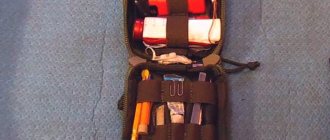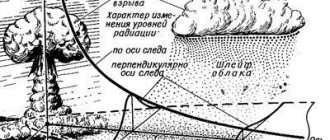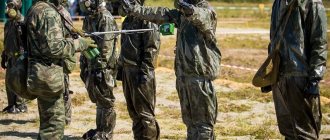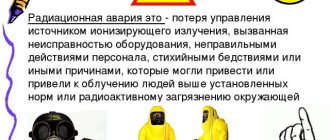Permissible doses of radiation
-
0.57 μSv/hour for five consecutive years - the maximum permissible total annual dose received from all technogenic sources is
1 mSv/year
In subsequent years, background radiation should not exceed 0.12 μSv/hour
The value of 1 mSv/year should in total include all episodes of man-made exposure to radiation on humans. This includes all types of medical examinations and procedures, including fluorography, dental x-rays, and so on. This also includes flying on airplanes, going through security at the airport, obtaining radioactive isotopes from food, and so on.
Radiation measuring instruments
In domestic conditions, pocket dosimeters are used to determine the level of radiation, which can be used both in domestic conditions and in contaminated areas. They can also be used to test food and other items for contamination by radioactive particles. Such devices are widely used by tourists and environmental specialists.
Also, to count ionizing particles, a Geiger counter is used, a device that has a characteristic chirping sound. It is also the device used to measure radiation.
How is radiation measured?
To assess the physical properties of radioactive materials, the following quantities are used:
- activity of the radioactive source (Cu or Bq)
- energy flux density (W/m2)
To assess the effect of radiation on matter (not living tissue), the following are used:
- absorbed dose (Gray or Rad)
- exposure dose (C/kg or X-ray)
To assess the effect of radiation on living tissues, the following are used:
- equivalent dose (Sv or rem)
- effective equivalent dose (Sv or rem)
- equivalent dose rate (Sv/hour)
Standards according to SanPin
Since a significant part of the radiation comes from food, drinking water and from the air, SanPiN has introduced standards that will allow us to evaluate these sources:
- How much for premises? The safe amount of gamma rays is 0.25-0.4 μSv/hour (this figure includes the natural background for a particular area), radon and thoron in total are no more than 200 Bq/cub.m. in year.
- In drinking water – the sum of all radionuclides does not exceed 2.2 Bq/kg. Radon – no more than 60 Bq/hour.
- For products, the radiation norm is specified in detail, for each type separately.
If the doses in the apartment exceed those specified in paragraph 1, the building is considered dangerous to life and is reclassified from residential to non-residential, or is designated for demolition.
The contamination of building materials must be assessed: uranium, thorium, and potassium in total should not exceed 370 Bq/kg. The site for construction (industrial, individual) is also assessed: gamma rays near the ground - no more than 0.3 μSv/h, radon - no more than 80 mBq/sq.m*s.
What to do if the radioactivity of drinking water is higher than the specified norm (2.2 Bq/kg)?
Such water is once again assessed for the content of specific radionuclides separately for each type.
Interesting: sometimes you can hear that eating bananas or Brazil nuts is harmful. Nuts do contain some amount of radon, since the roots of the trees on which they grow go extremely deep into the soil, which is why they absorb the natural background inherent in the subsoil.
Bananas contain potassium-40. However, millions of these foods would need to be consumed to reach levels that would be dangerous.
Important: many naturally occurring foods contain radioactive isotopes. On average, the rate of permissible radiation received from food is 40 millirem/year (10% of the annual dose). All products intended for food sold through stores must be tested for contamination with strontium and cesium.
Assessment of the effect of radiation on non-living objects
The effect of radiation on a substance is manifested in the form of energy that the substance receives from radioactive radiation, and the more the substance absorbs this energy, the stronger the effect of radiation on the substance. The amount of energy of radioactive radiation affecting a substance is estimated in doses, and the amount of energy absorbed by the substance is called absorbed dose .
Absorbed dose is the amount of radiation that is absorbed by a substance. The SI system uses Gray (Gy) to measure absorbed dose .
1 Gray is the amount of radioactive energy of 1 J that is absorbed by a substance weighing 1 kg, regardless of the type of radioactive radiation and its energy.
1 Gray (Gy) = 1 J/kg = 100 rad
This value does not take into account the degree of exposure (ionization) to the substance of various types of radiation. A more informative value is the exposure dose of radiation.
Exposure dose is a value characterizing the absorbed dose of radiation and the degree of ionization of a substance. Coulomb/kg (C/kg) to measure exposure dose.
.
1 C/kg= 3.88*103 R
The non-systemic exposure dose unit used is Roentgen (R):
1 R = 2.57976*10-4 C/kg
Dose of 1 Roentgen
- this is the formation of 2.083 * 109 pairs of ions per 1 cm3 of air
How to measure radiation levels?
In order to determine the strength of the radiation flux and analyze its effect on a living organism, special devices called dosimeters and ionizing radiation dose units, roentgens, are used.
How is the dose of absorbed radiation measured? Such equipment counts the number of charged ions in a certain area, and then compares the results with the acceptable limits entered as the original number. The difference indicators will be indicators of the real radiation background. How is ionizing radiation measured? It should be noted that the maximum permissible norms of radiation flux are considered to be no higher than 1-3 roentgens. Critically high doses of ionized substances in the air can harm a person and cause many complications, diseases and inflammations.
It is worth saying that such matter as background radiation, dosimetric quantities and their units of measurement cannot be seen or felt by a person without special equipment and equipment. Therefore, with radiation exposure and critical infection, a person can feel danger only when ionizing elements begin to negatively affect internal organs and systems and provoke diseases. Unfortunately, when a person is diagnosed with radiation sickness (a disease associated with a high dose of radiation received), it is almost impossible to save or completely cure the person.
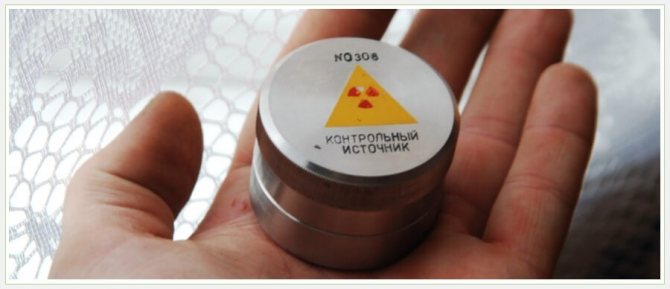
Assessment of the effects of radiation on living organisms
If living tissues are irradiated with different types of radiation having the same energy, the consequences for living tissue will vary greatly depending on the type of radioactive radiation. For example, the consequences of exposure to alpha radiation with an energy of 1 J per 1 kg of substance will be very different from the consequences of exposure to energy of 1 J per 1 kg of substance, but only gamma radiation. That is, with the same absorbed dose of radiation, but only from different types of radioactive radiation, the consequences will be different. That is, to assess the effect of radiation on a living organism, simply the concept of absorbed or exposure dose of radiation is not enough. Therefore, the concept of equivalent dose was introduced for living tissues .
The equivalent dose is the dose of radiation absorbed by living tissue, multiplied by the coefficient k, which takes into account the degree of danger of various types of radiation. The SI system uses sievert (Sv) .
The off-system equivalent dose unit used is the rem (rem) : 1 Sv = 100 rem.
| Factor k | |
| Type of radiation and energy range | Weight multiplier |
| Photons of all energies (gamma radiation) | 1 |
| Electrons and muons of all energies (beta radiation) | 1 |
| Neutrons with energy < 10 KeV (neutron radiation) | 5 |
| Neutrons from 10 to 100 KeV (neutron radiation) | 10 |
| Neutrons from 100 KeV to 2 MeV (neutron radiation) | 20 |
| Neutrons from 2 MeV to 20 MeV (neutron radiation) | 10 |
| Neutrons > 20 MeV (neutron radiation) | 5 |
| Protons with energies > 2 MeV (except recoil protons) | 5 |
| Alpha particles, fission fragments and other heavy nuclei (alpha radiation) | 20 |
The higher the “k coefficient”, the more dangerous the effect of a certain type of radiation is on the tissues of a living organism.
For a better understanding, we can define “equivalent radiation dose” a little differently:
The equivalent dose of radiation is the amount of energy absorbed by living tissue (absorbed dose in Gray, rad or J/kg) from radioactive radiation, taking into account the degree of impact (harm) of this energy on living tissue (K coefficient).
What is radiation
Radiation is a type of radiation from charged particles. Such radiation, affecting surrounding objects, ionizes the substance. In the case of humans, it not only ionizes cells, but also destroys them or causes cancer.
Most elements of the periodic table are inert and harmless, but some are unstable. Without going into details, you can describe it like this. The atoms of some substances disintegrate due to weak internal bonds. This decay is accompanied by the release of alpha, beta particles and gamma radiation.
Such a release is accompanied by the release of energy with different penetrating abilities and having different effects on the tissues of the body.
Permissible radiation standards
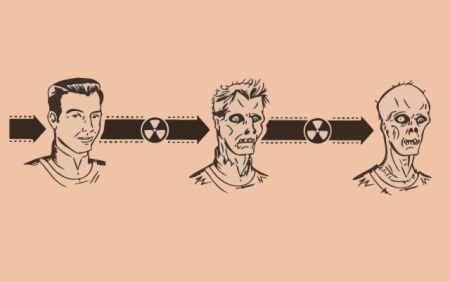
In Russia, since the Chernobyl accident, the non-systemic unit of measurement microR/hour, reflecting the exposure dose,
, which characterizes the measure of ionization of a substance and the dose absorbed by it. This value does not take into account the differences in the effects of different types of radiation (alpha, beta, neutron, gamma, x-ray) on a living organism.
The most objective characteristic is the equivalent radiation dose, measured in Sieverts. To assess the biological effects of radiation, the equivalent dose rate of radiation, measured in Sieverts per hour, is mainly used. That is, this is an assessment of the impact of radiation on the human body per unit of time, in this case per hour. Considering that 1 Sievert is a significant dose of radiation, for convenience, a multiple of it is used, indicated in micro Sieverts - μSv/hour:
1 Sv/hour = 1000 mSv/hour = 1,000,000 μSv/hour.
Values that characterize the effects of radiation over a longer period, for example, 1 year, can be used.
For example, in the radiation safety standards NRB-99/2009 (clauses 3.1.2, 5.2.1, 5.4.4), the norm of permissible exposure to radiation for the population from man-made sources is 1 mSv/year .
The regulatory documents SP 2.6.1.2612-10 (clause 5.1.2) and SanPiN 2.6.1.2800-10 (clause 4.1.3) indicate acceptable standards for natural sources of radioactive radiation of 5 mSv/year . The wording used in the documents is “acceptable level”, which is very successful, because it is not acceptable (that is, safe), but rather acceptable .
But there are contradictions in regulatory documents regarding the permissible level of radiation from natural sources. If we sum up all the permissible standards specified in regulatory documents (MU 2.6.1.1088-02, SanPiN 2.6.1.2800-10, SanPiN 2.6.1.2523-09) for each individual natural source of radiation, we obtain that the radiation background from all natural sources radiation (including the rare gas radon) should not exceed 2.346 mSv/year or 0.268 μSv/hour. This is discussed in detail in the article “Sources of Radioactive Radiation”. However, the regulatory documents SP 2.6.1.2612-10 and SanPiN 2.6.1.2800-10 indicate an acceptable standard for natural radiation sources of 5 mSv/year or 0.57 μS/hour.
As you can see, the difference is 2 times. That is, an increasing factor of 2 was applied to the permissible standard value of 0.268 μSv/hour without any justification. This is most likely due to the fact that in the modern world we are massively surrounded by materials (primarily building materials) containing radioactive elements.
Please note that, in accordance with regulatory documents, the permissible level of radiation from natural sources
radiation
5 mSv/year
, and from artificial (man-made) sources of radioactive radiation only
1 mSv/year.
It turns out that when the level of radioactive radiation from artificial sources exceeds 1 mSv/year, negative effects on humans can occur, that is, lead to diseases. At the same time, the standards allow that a person can live without harm to health in areas where the level is 5 times higher than the safe man-made exposure to radiation, which corresponds to the permissible natural background radioactive level of 5 mSv/year.
According to the mechanism of their effect, the types of radiation emitted and the degree of its effect on a living organism, natural and man-made sources of radiation do not differ.
Still, what do these norms say? Let's consider:
- the norm of 5 mSv/year indicates that a person over the course of a year can receive a maximum total dose of radiation absorbed by his body of 5 miles Sievert. This dose does not include all sources of technogenic impact, such as medical ones, from environmental pollution with radioactive waste, radiation leaks at nuclear power plants, etc.
- to estimate what dose of radiation is permissible in the form of background radiation at a given moment, we calculate: the total annual rate of 5000 μSv (5 mSv) is divided by 365 days a year, divided by 24 hours a day, we get 5000/365/24 = 0, 57 μSv/hour
- the resulting value is 0.57 μSv/hour, this is the maximum permissible background radiation from natural sources, which is considered acceptable.
- on average, the radioactive background (it has long ceased to be natural) ranges from 0.11 to 0.16 μSv/hour. This is normal background radiation.
We can summarize the permissible radiation levels in force today:
- According to regulatory documentation, the maximum permissible level of radiation (background radiation) from natural radiation sources can be 0.57 μS/hour.
- If we do not take into account the unreasonable increasing factor, and also do not take into account the effect of the rarest gas - radon, we obtain that, in accordance with regulatory documentation, normal background radiation from natural radiation sources should not exceed 0.07 µSv/hour
- The maximum permissible standard total dose received from all technogenic sources is 1 mSv/year.
It can be confidently stated that a normal, safe background radiation of 0.07 μSv/hour existed on our planet before the industrial use of radioactive materials, nuclear energy and atomic weapons (nuclear tests) by humans.
And as a result of human activity, we now consider acceptable background radiation 8 times higher than the natural value.
It is worth considering that before the active exploration of the atom by man, humanity did not know what cancer was in such massive numbers as is happening in the modern world. If cancer cases were registered in the world before 1945, they could be considered isolated cases compared to statistics after 1945.
Think about it , according to WHO (World Health Organization), in 2014 alone, about 10,000,000 people died on our planet from cancer, this is almost 25% of the total number of deaths, that is, in fact, every fourth person who died on our planet was a person who died from cancer.
Also, according to WHO, it is expected that in the next 20 years, the number of new cases of cancer will increase by about 70% compared to today. That is, cancer will become the leading cause of death. And no matter how carefully, the governments of states with nuclear energy and atomic weapons would not mask the general statistics on the causes of mortality from cancer. We can confidently say that the main cause of cancer is the effect on the human body of radioactive elements and radiation.
For reference:
To convert μR/hour to μSv/hour, you can use the simplified conversion formula:
1 μR/hour = 0.01 μSv/hour
1 µSv/hour = 100 µR/hour
0.10 µSv/hour = 10 µR/hour
The specified conversion formulas are assumptions, since μR/hour and μSv/hour characterize different quantities, in the first case it is the degree of ionization of the substance, in the second it is the absorbed dose by living tissue. This translation is not correct, but it allows us to at least approximately assess the risk.
Types of radiation
Radiation can be of several different types, each of which is characterized by its own damaging factors. The radiation background that is present on Earth is divided into natural (of natural origin) and artificial (of man-made origin). So, any person is constantly in the field of one or another source of radiation.
The nuclear fission reaction is widely used to produce energy. All nuclear power plants are built on its basis. Nuclear fuel has amazing efficiency and energy intensity. So, to heat 100 tons of water, you need a radioactive isotope weighing only 1 g.
Radiation waves are divided into:
- alpha waves;
- beta waves;
- gamma waves;
- neutron radiation.
Alpha radiation occurs during the nuclear decay of heavy chemical elements, including uranium, radium, thorium and others. Their affected area is limited to a small distance from the point of origin: in the air - approximately 8-10 cm, in biological media - only 0.01-0.05 mm.

Alpha waves cannot penetrate even a sheet of ordinary paper and keratinized epithelial cells. However, if the particles do enter the human body, for example, through areas of the skin with impaired integrity of the integument or through the oral cavity, then, having penetrated the bloodstream, they will spread throughout the body and settle mainly in the endocrine glands and lymph nodes, which will lead to internal poisoning, the severity of which will depend on the dose received.
Beta radiation is the flow of electrons from the nuclear decay of radioactive elements. Beta particles are capable of penetrating into the human body at a distance of up to 20 cm. Beta radiation has found wide application in radiation therapy in the treatment of cancer.
Neutron radiation is a stream of electrically neutral particles. It is characterized by the greatest strength and depth of penetration. These waves are used as an accelerator of other particles for scientific purposes at industrial enterprises, as well as in various laboratory studies.
Read also: Harm of Wi-Fi and impact on the human body
Gamma radiation also has a fairly high penetrating ability. It does not carry charged particles and, therefore, is not affected by magnetic and electric fields. Applicable in the following areas:
- Medicine: radiation therapy.
- Food industry: canning.
- Branch of the space industry.
- Geophysical research.
Gamma particles can cause acute radiation sickness (ARS) with single large doses of radiation, and chronic sickness with prolonged exposure to an ionizing factor.
Units of measurement used in the media
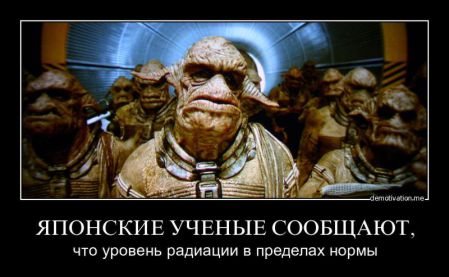
Often, when publicly announcing information about radiation contamination, official structures deliberately use values that do not allow an objective assessment of the degree of threat. For example, when covering the Fukushima-1 nuclear power plant accident in Japan, data on pollution density
soil or water radioisotopes in Becquerels per unit volume, or
the activity of radioisotopes
in Curie is indicated. These values characterize only the radioactive isotope itself, indicating the number of decays of the element’s nuclei per unit of time and do not give an idea of its potential impact on the substance or living organisms.
A more objective value that allows you to assess the degree of danger of radioactive contamination is to indicate the equivalent dose in Sieverts (Sv)
, miles Sieverts (mSv) or micro Sieverts (µSv).
This is done by the media consciously, because if it were stated that the background radiation in Fukushima is 100 mSv/hour (registered fact), this is equal to 100,000 µSv/hour, everyone can compare it with the normal background radiation for man-made sources and understand that radiation contamination is approximately 1,000,000 times
above the permissible level, which, in accordance with the regulatory document NRB-99/2009, should be 0.11 μSv/hour or which corresponds to 1000 μSv/year or 1 mSv/year. This means that when exposed to radiation for 30 minutes, a person will receive a one-time dose of radiation that he could have received throughout his life. That is, the body has been subjected to an enormous time-concentrated energy impact, which can most likely lead to oncology.
Dependence of radiation on geography
Due to the fact that background radiation can be either artificial or natural, ionizing substances can be concentrated in greater quantities in certain areas, but practically not detected in others. For this reason, different tables of radiation activity, units of measurement of radiation levels and permissible standards for its impact on humans are developed for individual geographical zones. For example, people who work or live near an active volcano or ionizing underground rock may be exposed to more radiation than people living near natural springs and organic forests.
Classification of radiation sickness, depending on radiation doses
The disease is characterized based on the dose of ionizing radiation the patient received and how long it lasted. A single exposure leads to an acute condition, and constantly repeated, but less massive, leads to chronic processes.
Let's consider the main forms of radiation sickness, depending on the single exposure received:
- radiation injury (less than 1 Sv) – reversible changes occur;
- bone marrow form (from 1 to 6 Sv) - has four degrees, depending on the dose received. The mortality rate for this diagnosis is more than 50%. Red bone marrow cells are affected. The condition may be improved by transplantation. The recovery period is long;
- gastrointestinal (10–20 Sv) is characterized by severe condition, sepsis, gastrointestinal bleeding;
- vascular (20–80 Sv) – hemodynamic disturbances and severe intoxication of the body are observed;
- cerebral (80 Sv) – death within 1–3 days due to cerebral edema.
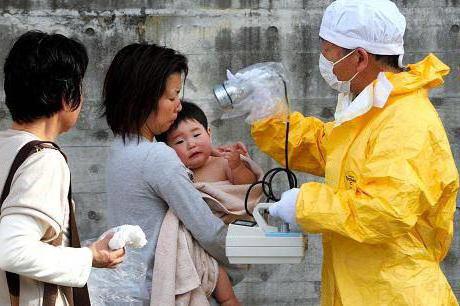
Patients with the bone marrow form have a chance of recovery and rehabilitation (in half of the cases). More severe conditions cannot be treated. Death occurs within a few days or weeks.
Is there even a safe dose?
The norm of radiation is a vague concept. In 1950, the Scandinavian scientist Rolf Siewert established that there is no threshold level of radiation - a certain value at which a person is guaranteed not to experience noticeable or imperceptible damage.
Any existing rate of radiation is theoretically capable of causing somatic and genetic changes in the human body. Many of which do not appear immediately, but remain hidden for a long period of time. Therefore, it is difficult to talk about radiation standards - there are only permissible limits.
Indicators of permissible radiation doses
According to radiation safety standards, maximum permissible values of ionizing radiation per year have been established.
Let's look at the given indicators in the table. Permissible doses of radiation exposure for one year
| Effective dose | To whom does it apply? | Consequences of exposure to rays |
| 20 | Category A (exposed to radiation while fulfilling work standards) | Has no adverse effects on the body (modern medical equipment does not detect changes) |
| 5 | Population of sanitary-protected zones and category B exposed persons | |
| Equivalent dose | ||
| 150 | Category A, area of the eye lens | |
| 500 | Category A, tissue of skin, hands and feet | |
| 15 | Category B and population of sanitary protected zones, area of the eye lens | |
| 50 | Category B and population of sanitary protected areas, skin tissue, hands and feet |
As can be seen from the table, the permissible radiation dose per year for workers in hazardous industries and nuclear power plants is very different from the indicators derived for the population of sanitary-protected zones. The thing is that with prolonged absorption of permissible ionizing radiation, the body copes with the timely restoration of cells without compromising health.
Radiation regulation
The purpose of radiation control is not just to measure its level, but also to determine whether the indicators comply with established standards. Criteria and standards for safe levels of radiation are prescribed in separate laws and generally established rules. The conditions for containing man-made and radioactive substances are regulated for the following categories:
- Food
- Water
- Air
- Building materials
- Computer technology
- Medical equipment.
Manufacturers of many types of food or industrial products are required by law to prescribe radiation safety compliance criteria and indicators in their conditions and certification documents. The relevant government services quite strictly monitor various deviations or violations in this regard.
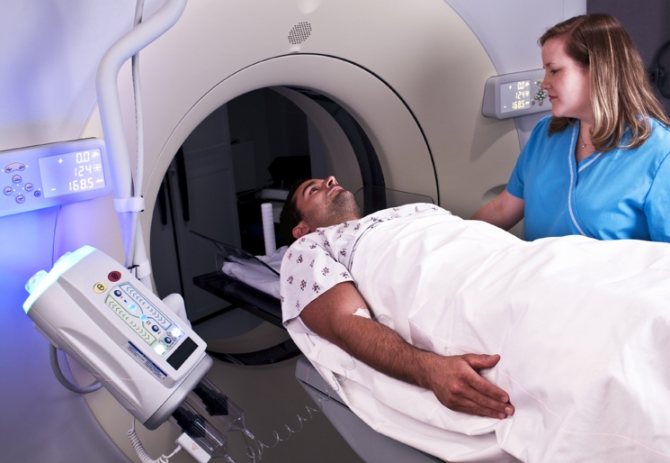
Lethal dose
Any radiation standards usually always prescribe a dose that quickly leads to death. The danger of obtaining it is most often observed when man-made accidents occur or non-compliance with the storage conditions of radioactive waste (regardless of what type of radiation affects a person).
According to radiation standards, the lethal dose is 6-7 Sv/hour or more. Moreover, even to a small extent, a constantly high background radiation is highly likely to cause the development of mutations in the cells of a living organism. Radiation levels in the workplace or at home can be monitored using household dosimeters.

